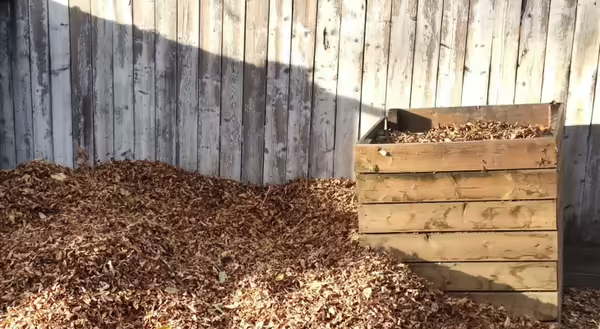
Stepping outside on a cool fall day, I can recall the childhood joy of fall leaves and singing, “leaves are falling, leaves are falling...” as we watched the autumn scene unfold before us. The colorful fall leaves once hanging from the trees are now a patchwork of various shades and shapes scattered across the lawn and landscape. As their muted palate dulls to brown, these dried, decomposing leaves become a great free source of nutrients for your yard or garden.
There are several benefits of keeping fallen leaves on site, whether you choose to clear them off lawns or leave them to naturally collect in patches within the landscape.
One thing to consider before removing or destroying any leaves is their benefit as insect habitat. Many overwintering insects like butterflies, moths, and beetles, seek shelter in leaves for the winter. Some trees are great hosts for insects to overwinter, including pawpaw, tulip tree, oak, hickory, black walnut, redbud, hackberry, and birches. With these species, consider the ecological impact of leave removal before clearing them from the lawn and garden beds.
Raking leaves often lands at the bottom of the To-do list but it is great exercise and can end in fun. Rake the kaleidoscope of color into large piles for an afternoon of fall play – join the kids jumping in and throwing leaves or watch the spectacle while clasping a warm mug of cider or cocoa. Once the fun has subsided, the collected leaves can be used on-site in a variety of ways. They make great mulch in the vegetable garden for the winter. The dense layer of leaves will help smother weeds and then be incorporated into the soil in the spring for added organic matter. They are great protection from cold temperatures and winter wind. Pile leaves around the base of tender plants in the landscape for winter insulation.
Leaves can be added to an existing compost pile, or start one this fall in a shady spot of the yard. The key to success with a compost pile is alternating layers of one-part green materials to two-parts brown materials. Greens are the nitrogen component and include grass, kitchen scraps, and coffee grounds. Browns are the carbon component and include fallen leaves, straw, or shredded paper (non-glossy) and cardboard. Piles should be turned every 30 days to mix and aerate the materials.
If your goal is to have a healthy, green lawn next spring, then you will want to remove as many leaves as possible this fall. Heavy, matted layers of leaves can suffocate the turf and could inhibit new growth in the spring. It could also make the turf more prone to pest damage from voles and mice, and diseases, such as snow mold.
If raking leaves is not possible, there is also the option to mulch the leaves with a lawnmower. Set the mower deck to the highest setting and mow as usual. The mower chops the leaves into smaller pieces, which will break down at a faster rate than whole leaves. The mulched leaves provide rich nutrients to the soil as they decompose.
Whether raking or mowing, enjoy a favorite childhood song to accompany your work…“leaves are falling, leaves are falling, to the ground, without a sound.”
Photo Source: "Our leaf pile" by Kim Siever is marked with Public Domain Mark 1.0.
ABOUT THE AUTHOR: Brittnay Haag is a Horticulture Educator with University of Illinois Extension, serving Livingston, McLean, and Woodford Counties. Her work focuses on youth horticulture education, specifically through school gardens and Jr. Master Gardener programs. Brittnay provides leadership for three county Master Gardener programs and is responsible for developing community programs and providing expertise in horticulture and environmental sciences.